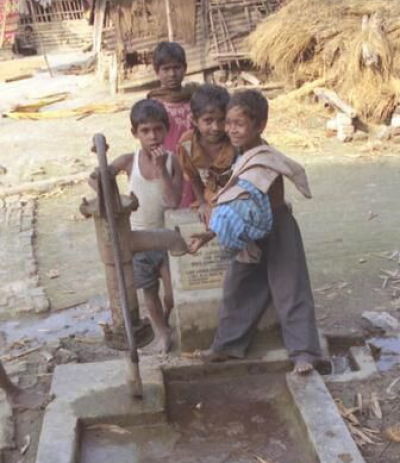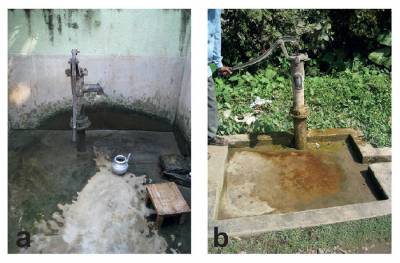
Groundwater is a global resource of fundamental significance. Seventy-five per cent of the world's water supply, including drinking water, is provided by groundwater.
In Bangladesh and West Bengal, 95% of the rural population use shallow hand-pumped tubewells for drinking water, but approximately half of the 20 million shallow tubewells are polluted by arsenic, a colourless, odourless, tasteless, carcinogen. The health of up to 70 million people may be affected adversely by use of this groundwater for drinking and cooking. In addition, food self-sufficiency across the region is dependent on groundwater irrigation during the dry (winter) season, and there is concern over human exposure to arsenic in the dry-season rice crop.
The problem is not confined to Bangladesh and West Bengal. Since the discovery there of As-pollution of groundwater, such pollution has been found in deltaic and alluvial aquifers across the World. Understanding the causes of such pollution is the essential first step in dealing with a problem that adversely affects millions of consumers worldwide.
Addressing such issues, members of LOGIC were the first to recognise the mechanism of arsenic pollution in Bangladesh (Nickson et al., Nature 1998) and have subsequently been at the forefront of explaining how the pollution is controlled by delta sedimentology and human influences (Hoque et al., Sci Total Environ. 2012; McArthur et al., Sci Total Environ. 2012). For example, using field and laboratory studies, we have shown that buried palaeosols, at depths of 20 to 40 m below ground level and formed during the late Pliestocene, are a major control on groundwater flow and arsenic distribution (Hoque et al., Hydrogeology Journal 2014). Groundwater flow models indicate the potential, and the limits, of deep groundwater as an alternative water supply that is free of excessive arsenic (Burgess et al. Nature Geoscience 2010).
From a hydrogeological synthesis of arsenic occurrence across southern Bangladesh, and descriptions of the Bengal Aquifer System to >350 m depth, we have emphasised likely trends in arsenic concentration at shallow tubewells and demonstrated the potential for deep groundwater, free of excessive arsenic, to provide a safe alternative water supply. Our work has contributed to strategies for groundwater monitoring, and to Government of Bangladesh policies for deep groundwater pumping..
 |
| The color of well-stain: a, Black coloration of a well, well-screen, or domestic utensils, derives from precipitation from groundwater of manganese oxide and indicates that a well is As-free and, in southern West Bengal, also that it is screened in the shallow aquifer. b, Red coloration derives from precipitation from groundwater of iron oxide and indicates the presence of As g 10 μg/L in shallow wells. |
 Close
Close


